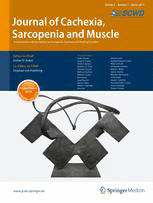
“Muscle wasting, anorexia, and metabolic dysregulation are common side-effects of cytotoxic chemotherapy, having a dose-limiting effect on treatment efficacy, and compromising quality of life and mortality.
Extracts of Cannabis sativa, and analogues of the major phytocannabinoid Δ9-tetrahydrocannabinol, have been used to ameliorate chemotherapy-induced appetite loss and nausea for decades. However, psychoactive side-effects limit their clinical utility, and they have little efficacy against weight loss.
We recently established that the non-psychoactive phytocannabinoid (CBG) stimulates appetite in healthy rats, without neuromotor side-effects. The present study assessed whether CBG attenuates anorexia and/or other cachectic effects induced by the broad-spectrum chemotherapy agent cisplatin.
RESULTS:
CBG (120 mg/kg) modestly increased food intake, predominantly at 36-60hrs (p<0.05), and robustly attenuated cisplatin-induced weight loss from 6.3% to 2.6% at 72hrs (p<0.01). Cisplatin-induced skeletal muscle atrophy was associated with elevated plasma corticosterone (3.7 vs 13.1ng/ml, p<0.01), observed selectively in MHC type IIx (p<0.05) and IIb (p<0.0005) fibres, and was reversed by pharmacological rescue of dysregulated Akt/S6-mediated protein synthesis and autophagy processes. Plasma metabonomic analysis revealed cisplatin administration produced a wide-ranging aberrant metabolic phenotype (Q2Ŷ=0.5380, p=0.001), involving alterations to glucose, amino acid, choline and lipid metabolism, citrate cycle, gut microbiome function, and nephrotoxicity, which were partially normalized by CBG treatment (Q2Ŷ=0.2345, p=0.01). Lipidomic analysis of hypothalami and plasma revealed extensive cisplatin-induced dysregulation of central and peripheral lipoamines (29/79 and 11/26 screened, respectively), including reversible elevations in systemic N-acyl glycine concentrations which were negatively associated with the anti-cachectic effects of CBG treatment.
CONCLUSIONS:
Endocannabinoid-like lipoamines may have hitherto unrecognized roles in the metabolic side-effects associated with chemotherapy, with the N-acyl glycine subfamily in particular identified as a potential therapeutic target and/or biomarker of anabolic interventions. CBG-based treatments may represent a novel therapeutic option for chemotherapy-induced cachexia, warranting investigation in tumour-bearing cachexia models.”
https://www.ncbi.nlm.nih.gov/pubmed/31035309